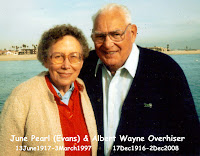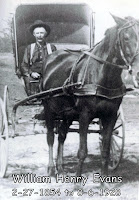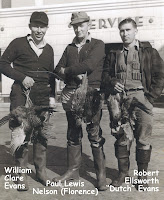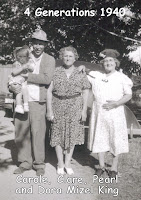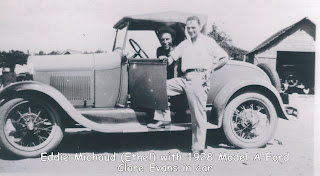- Edna and Bill's Basement - the smell of apples and potatoes stored on stairs under the bilco door, storm windows being caulked and painted red, musty damp dirt-floor storage area for canned goods, salt brine over flowing the ice cream maker, fuel oil furnace, clothes drying in the basement (Edna had a washer but not a dryer), fishing tackle box, and Grandpa Bill's cigarette smoke.
- Our Farm House - the smell of wood burning in the pot belly stove, wood storage room on back of house, hot water (heated on range) being pored into the cold bath water in the cold bathroom, then fuel oil (from Flemings) for the space heater and water heater, wet gloves drying on the space heater, vicks vaporizer, eggs and bacon cooking, laundry room clothes, plucking chickens, chicken being browned in a fry pan, canning fruit and canned goods stored in our Michigan basement. Then there was the fragrance of the outback outhouse that Albert used sometimes so he would not tie up the house bathroom
- Farm Equipment and storage buildings - the smell of rubber tires, hydraulic fluid, flooded tractor motors, grease guns, fertilizer spreader, spray dope (as we called it) storage area, piles of lime ready to be spread, rye and oats for seeding orchards, and the smell of the sour cherry lugs.
- Orchards and Fields - the smells from harvesting the different fruits, brush piles burning, fertilizers and sprays, damp orchard grass, dirt and dust from working the soil, rotting cauliflower, spring blossoms, Lake Michigan winds, and peach thinning smells and always the peach fuzz.
- Barn - the smell of animals, dusty stored equipment, hay and straw, ropes, skunk, rust on equipment, and basketballs as we had a small court inside the barn.
- Ratcliffe Field Locker Room -the smell of sweaty kids, sweaty dirty uniforms, musty showers, rubbing gels in the training room, tape for ankles, brown sticky tuff skin for blisters, rubber inside helmets, and equipment storage boxes. I added these non-farm locker room smells so I could share the photo of us celebrating South Haven's first football championship in 1957 - yes in the smelly locker room.
At The Farm December 1, 2011
Let it snow. The farm is ready for a long winter's nap. Soil at the farm has been tested and lime and potash (potassium carbonate) spread in the orchards. Allan has just gotten his pesticide license renewed. This is required every three years. He must obtain 22 credits by taking 15 to 20 classes during the three year period. Tree trimming is ongoing. The 5 kids are all playing basketball. Aaron has made the Fennville varsity as a freshman. Hope we get to see him play this winter.
May 2012 NOTE - The Russet photo above was taken by Adam of Adam's Apple's. He informs me it is not "Golden" but "Roxbury Russet" a close cousin of the "Golden". Adam produces a great blog all about apples. Check it out at www.adamapples.blogspot.com



































